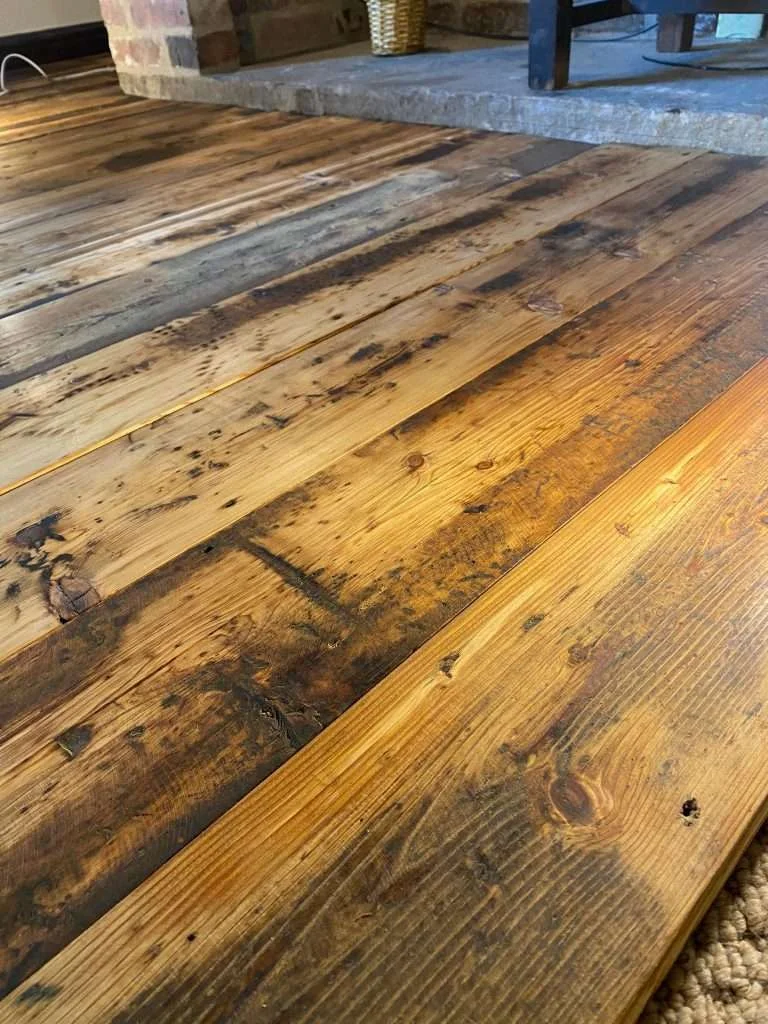Reclaimed Oak Floorboards vs. Other Reclaimed Woods
Unique Characteristics of Aged Oak
Reclaimed oak floorboards are revered for their unmatched durability and classic appeal. Oak, particularly when aged, develops unique characteristics that make it a sought-after material for flooring. Over time, the wood acquires a patina that enhances its grain, providing a rich, textured surface that exudes warmth and history. Reclaimed oak is known for its strength and resilience, making it an excellent choice for high-traffic areas. The deep, earthy tones of aged oak lend an air of elegance and timeless beauty to any room.

Distinguishing Features of Various Reclaimed Woods
When comparing reclaimed oak floorboards to other types of reclaimed wood flooring, several distinguishing features stand out. For instance, reclaimed pine often exhibits a softer texture and lighter colour, making it suitable for rustic or country-style interiors. In contrast, reclaimed chestnut offers a unique character with its distinct grain patterns and insect markings, imbuing spaces with a rustic charm. Reclaimed heart pine is another alternative, valued for its amber hues and dense, durable nature. Each type of reclaimed wood brings its own story and aesthetic, allowing homeowners to select the material that best suits their style and needs.
Customising Finishes to Match Décor
One of the appealing aspects of reclaimed oak flooring is the ability to customise finishes to complement existing décor. Reclaimed oak floorboards can be tailored with stains, oils, and varnishes to achieve a variety of looks, from contemporary chic to vintage rustic. Similarly, other reclaimed woods can be treated to enhance or alter their natural tones. The versatility of finishes allows for personalised designs that emphasise the unique grain patterns and colours of the wood, ensuring that reclaimed materials can seamlessly blend with or accentuate the overall interior design.
Influence of Wood Age on Appearance
The age of reclaimed wood significantly impacts its appearance and overall aesthetic. Older reclaimed oak, for example, tends to have a more pronounced grain and deeper patina, characteristics that are highly prized in vintage flooring. The age also affects the hardness and integrity of the wood, with older pieces generally being more robust. In comparison, younger reclaimed wood may have a fresher, lighter look, with different grain features. The historical value and aged appearance of reclaimed woods tell a story that adds depth and character to any space.
Effect of Surface Treatments on Aesthetics
Surface treatments play a crucial role in the final look of reclaimed wood flooring. For instance, a matte finish can enhance the natural beauty and texture of reclaimed oak, giving it a more subdued, rustic appearance. On the other hand, a glossy finish might bring out the richness of the wood’s colours and patterns, adding a touch of elegance. Brushing techniques can accentuate the grain and introduce a tactile element to the flooring. The choice of surface treatment ultimately influences the overall aesthetics, allowing homeowners to achieve their desired style while preserving the wood’s natural beauty.
Why Choose Reclaimed Oak Floorboards?
In the world of interior design, reclaimed oak floorboards stand out as a timeless and sustainable option that offers a unique blend of historical charm, durability, and versatile aesthetics. Whether you are drawn to the deep, earthy tones and robust nature of aged oak, or the distinctive characteristics of other reclaimed woods, there is a perfect choice to complement your space. By understanding the unique qualities of each type of reclaimed wood, customising finishes to match your décor, and considering the impact of wood age and surface treatments, you can create a truly personalised and visually stunning environment. Embrace the rich history and enduring beauty of reclaimed wood to transform your home into a masterpiece of warmth and elegance.
Wish to add Oak to your home? Browse our Oak Floorboards here